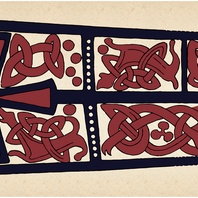
Viking Names
Stenson
Stenson, in the Appletree Hundred of Derbyshire, is an Anglo-Scandinavian compound from the Old Norse male personal name Steinn and Old English tun ‘an enclosure; a farmstead; a village; an estate’. It is a joint parish with Twyford.
Read More

Viking Names
Hasland
Hasland, in the Scarsdale Hundred of Derbyshire, is an Anglo-Scandinavian compound from Old English hæsel ‘a hazel-tree’ and Old Norse lundr ‘a small wood’. Earlier forms of the place-name such as Heselunt and Heslond show influence from Old Norse hesli ‘hazel-wood’.
Read More
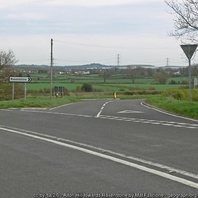
Viking Names
Ravenstone
Ravenstone, in the West Goscote Hundred of Leicestershire, is a hybrid name from the common Old Norse male personal name Hrafn combined with Old English tun ‘farm, settlement’. It has been suggested that the first element might be the Old English male personal name Hræfn, but it is unlikely. Ravenstone was originally part of the Repton and Gresley Hundred in Derbyshire and was transferred to Leicestershire in 1884 as a joint parish with Snibstone.
Read More

Viking Names
Swithland
Swithland, in the West Goscote Hundred of Leicestershire, comes from Old Norse sviðinn ‘land cleared by burning’ and Old Norse lundr ‘a small wood’. Thus the place-name has the meaning of ‘the wood next to or containing land cleared by burning’.
Read More
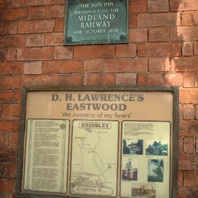
Viking Names
Eastwood
Eastwood, in the Broxtow Wapentake of Nottinghamshire, is a hybrid name formed from Old English east ‘east’ and Old Norse þveit ‘a clearing, a meadow, a paddock’. No form of the name has been found going back to Old Norse austr ‘east’.
Read More
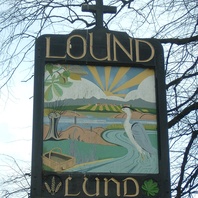
Viking Names
Lound
Lound, in the Bassetlaw Wapentake of Nottinghamshire, comes from the Old Norse element lundr ‘grove, wood’. This origin is celebrated on the village sign, and there is also a Grove Farm in the village.
Read More
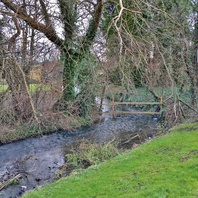
Viking Names
Nether Langwith
Nether Langwith, in the Bassetlaw Wapentake of Nottinghamshire, comes from Old Norse langr ‘long, tall’ and Old Norse vað ‘a ford’. The affix Nether ‘lower downstream’ distinguishes Nether Langwith from Upper Langwith, Derbyshire, further up the river Poulter.
Read More

Viking Names
Snitterby
Snitterby, in the Aslacoe Wapentake of Lincolnshire, is an Anglo-Scandinavian hybrid from the Old English unrecorded male personal name Snytra and Old Norse by ‘a farmstead, a village’. It is suggested that the personal name comes from Old English snotor, snytre ‘wise’. The same personal name has been attributed also to Snetterton, Norfolk.
Read More
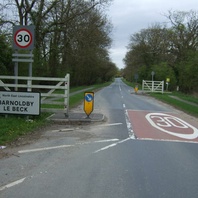
Viking Names
Barnoldby le Beck
Barnoldby le Beck, in the Haverstoe Wapentake of Lincolnshire, is a difficult name. The first element is likely from the Old Norse male personal name Bjǫrnúlfr, rather than the cognate Old English male personal name Beornwulf, especially taking into consideration the heavy Scandinavian influence in Lincolnshire. The second element is Old Norse by ‘a farmstead, a village’. The earliest reference to the Beck, from Old Norse bekkr ‘a stream, a beck’, is Barnoldby upon Becke 1662 Terrier.
Read More
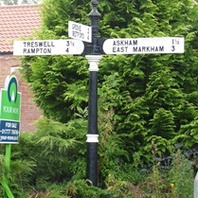
Viking Names
Askham
Askham, in the Bassetlaw Wapentake of Nottinghamshire, probably goes back to an original Old English æschām ‘ash tree farm,’ but the Old Norse cognate askr was substituted at an early date.
Read More

Viking Names
Tealby
Tealby, in the Walshcroft Wapentake of Lincolnshire, is a very difficult name. To explain the earliest recorded forms Tavelesbi and Tauelesbi in Domesday Book, it has been suggested that the first element contains the East Germanic group-name Taifali, Old English Taflas /Taeflas, detachments of whom are recorded as early as the fifth century. Possibly, this group retained their separate identity for some time in the post-Roman period. Thus, Tealby would originally have been a simplex form of the group-names Taflas /Taeflas, although simplex group-names are rare in English place-names. The second element Old Norse bý ‘a farmstead, a village’ was likely added to the simplex form after Scandinavian occupation of the area.
